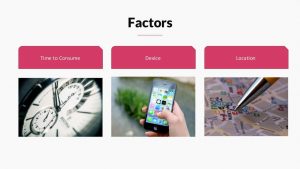Originally posted on white.net
Content marketing; creating and distributing engaging content to your core target audience. But how does it work? What are the processes and best practices? What do we need to consider before, during and after strategising our content? In this blog, we reveal all. If you want to skip the blog, you can see all the slides here.
Why do you need a content marketing strategy?
First of all, why can we not just write any old content for our websites? The answer is because we need to create a loyal brand that resonates with our customers. In The Human Brand written by Chris Malone and Susan Fiske, there are two key principles when it comes to brand loyalty; Warmth – Connecting with humans and having the right values – and Competency – Being able to deliver the service to a high standard.

For example, as digital marketers, we need values in our business that show passion for what we do. We need to show warmth through the eagerness to explain and educate clients, friendly participation at events and sharing knowledge, as well as talking to clients/industry people about digital – beyond our day-to-day SEO and PPC roles. But at the same time, we need to show competency through knowledge of the latest changes in digital marketing, attending thought‐leadership events, and expanding knowledge beyond our immediate deliverable work.
Personal connections are key
Ultimately, personal connections with our audiences are key. The more we connect with our audience, the more we will improve rankings, drive traffic and increase awareness. This is especially in today’s digital market as traditional ranking signals are becoming less significant. Google’s algorithms are becoming so complex through machine learning that’s understanding more about what the user wants to find when browsing – not so many websites specifically optimised for keywords etc.

The best metrics to measure how engaged the audience is with our content is Bounce Rate vs. Organic Position Average Time on Site vs. Organic Position Engagement. This shows that Google is recognising that the more time a user spends on your site, the better the rankings you’ll have. The core ranking factors like high-quality backlinks and keyword targetting are now just not enough to get by. It’s all about suiting your content to your users to gain a personal connection so they’re more engaged with your brand.
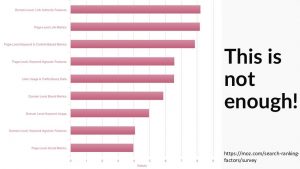
Step 1: Define Your Commander’s Intent
So, step 1 of what to consider when launching a content marketing strategy is defining your commander’s intent. What do we mean by this, well General George S. Patton once said: “Never tell people how to do things. Tell them what to do and they will surprise you with their ingenuity”. Essentially, if you lay out a step by step process of how someone should reach a goal then when there are complications, that person gets stuck because the original plan is then obsolete. If, however, you tell someone what the end goal is then their natural ingenuity will help them get to the end goal.

A great example of this is Spirit Airlines. The owner told their strategist that their only goal is being the cheapest domestic airline in the US. This is the commander’s intent, and the strategist, in turn, formed a strategy to reach this goal accordingly with features like bare fare, frill control and plane simple.

Step 2: Know what you will measure
The next step is to make sure everyone involved in the content marketing process knows what will be measured and which goals want to be achieved. Usually, this means coming up with three core goals and others to monitor. An example of the measurement options include Rankings, Profit, Revenue, Engagement, Brand Awareness, Traffic, Enquiries, Repeat visits to the site, Social Following Partnerships built, ROI and Time on Site.
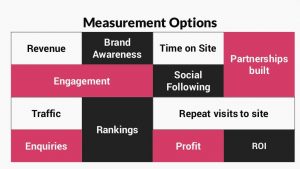
All these metrics measure the impact of a content marketing campaign and the progress of an online business. So it’s important to look at them as a whole for different timescales; i.e. what metrics matter months 1- 3, which are more important 3-6 and 6-12, etc. Over time the strategy can be altered to improve certain metrics measured during the campaign.

Step 3: Initial Research
So why are we creating the content? If it’s all about how we can resonate with the core audience groups, what questions do we need to ask before creating and distributing the content? Initially, research and answer these questions: How do people know they want your product/service? Who will you be selling to? What makes you different from your competitors? What is the alternative to your product/service? What questions is your audience asking? The broader the picture you build of your target audience and why you’re selling to them, the more you’ll focus on creating relevant content to fit their needs.
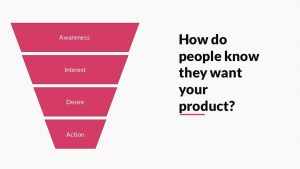
Which stage of the purchase funnel are they?
All content created is based on ‘how do people know they want your product?’. By this, we mean the potential customer could be at the ‘awareness’ stage when they’re finding a solution for something (‘how to fix TV with fuzzy sound?’), or the or the ‘interest’ stage where they’re researching the options for solving the problem (‘best tv reviews’), or the ‘desire’ stage when the user is looking to purchase a product to solve their solution (‘difference between 4k HD and HD’), or the ‘action’ stage where the potential customer is ready to buy (‘Ultra HD 4K Pro HDR OLED Television’). All four of these stages are important when creating content and ultimately driving more sales.

There are then lots of ways to create personas of your core audience groups. Ask yourself questions to understand the person you’re likely to be selling to. Are they male or female? How old are they? What’s their income? What job do they do? What’s their family status? What are their likes and dislikes? What’s their everyday routine? All thee questions can be first answered based on your personal experiences and knowledge of your brand then use tools like You Gov Profiles Lite to research the questions being asked in the relevant market.
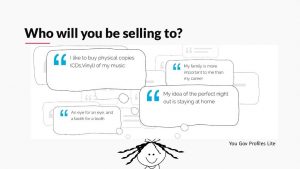
Step 4: Know what your customers want
Now it’s a case of knowing exactly what your audience wants. The best way to understand this is to know where your audience hangs out online. There are multiple places this may be including forums, social media, Google search pages and tools like Bloomberry. First of all find a forum that suits your audience group then do a site search by typing ‘site:domain plus keyword’ into the Google search bar. For instance, the site search ‘site:mumsnet.com/talk motivation’ will bring up all the conversations around motivational techniques for mothers. These forum thread titles can then be translated into blog topics/titles.

Similarly, if you type in any relevant hashtag or keyword into Twitter’s search bar you’ll find heaps of relevant tweets with questions around a topic. You can then use scraping tools to extract all the relevant information on those chosen topics to scan your findings. Finally, tools like Bloomberry and Answer The Public gather data from Google suggest and aggregate the most common search queries around a topic. From here you’ll have an overview of what your audience is speaking about.
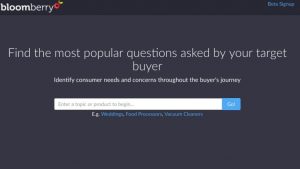
Step 5: Produce the content
Now it’s time to produce the content, but where do you start? Start again by ‘who is my content for”. There are two types of audience to cater to and consider: current customers and potential customers. The idea is to attract new customers who engage with your current content, while also making sure that new content appeals to current and new audiences. There is content that exclusively appeals to current customers, other content created for potential customers, and some do both.
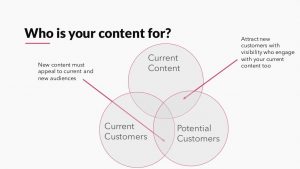
It’s also important to consider the factors of who is reading the content. For instance, are the audience likely to be those sitting down and having a good read of your content, or will they more likely be scanning and flicking through? If they’re using a desktop, do they want more information on screen compared with an on-the-go mobile browsing experience? Are they looking for location-specific content? For example, they’re in a new area, would they be looking for your restaurant by location?
Don’t just create the newest thing
Sometimes it’s easy to have a so-called lightbulb moment with a content idea, but although the topic/title may be brilliantly interesting, has something similar worked before? Is there evidence that this content will really fly? Don’t just make the newest thing, but don’t copy old ideas. Adapt successful old ideas to make them your own. For example, theatlas.com and mapchart.net are two sites with publically available data from sources you can rely on. Data and statistics are always changing so why not base your content on new trends?

In addition to this, optimising your content for featured snippets is also a great way to improve click-through rates (CTRs) in SERP. What is a featured snippet? It’s that information box that comes up with an informed answer for a specific search query. If you’re a furniture retailer and users are searching for ‘how do I clean my leather sofa’, you could produce a blog post containing an answer to this exact search query in the form of a single paragraph or in list form. A great trick for brand trust.
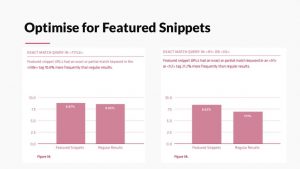
Step 6: Help people find it
So, you’ve created the great content but don’t forget to promote it. First, and foremost, use your technical SEO knowledge; make sure Google can access it. Really you shouldn’t be creating new content until the technical health of your site is up to speed. With a clear site taxonomy, consistent internal linking, an updated XML sitemap and robots.txt file, your site will be easily crawlable by the Google bots, and more importantly, they will be able to seek out all your great content.

Then its a case of sharing your content on the most relevant social platforms. Twitter is popular for ages 18-‐29, but remember that LinkedIn users tend to be slightly older, earning more money and have a university degree, while Twitter and Facebook are also more frequently used than LinkedIn, at least once a day. Again, know your audience.
Lots of ways to share your content
Other techniques include building and following Twitter lists. and publishing content on LinkedIn Pulse. The former will keep you up to date with who wants to hear about the type of content your producing, and over time, you’ll build up a quality list of Twitter users and influencers who may well share your content pieces. The latter is another way for businesses to upload their content in front of a niche audience group. You can also automate all your social media posts through tools like Sprout Social, so you consistently post each day.
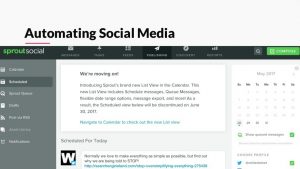
Finally, most importantly, be consistent with all your posts. Users will expect a tweet of a certain style, format, imagery and time each day. If a tweet is delivered in an unusual way then this may throw the core audience group. Also always think about tagging related accounts which could engage with a new audience group and share content beyond a retweet. It’s also worth promoting quality content through paid social channels like Facebook, Twitter and Instagram to gain even more eyes and ultimately drive conversions to your product.
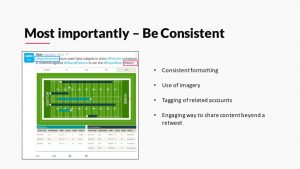
Key takeaways
- Step 1: Commanders Intent
- Step 2: Know what you will measure
- Step 3 : Initial Research
- Step 4: Know what your customers want
- Step 5: Produce the Content
- Step 6: Help people find it
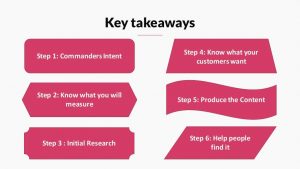
And if you need any further explanation or advice on content marketing then don’t hesitate to contact our very friendly team.


